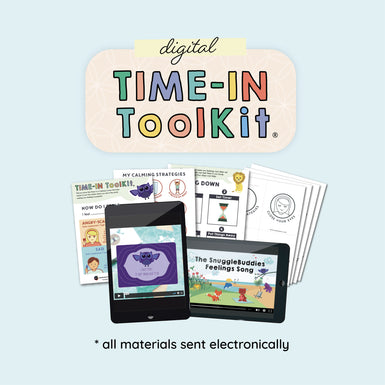“True learning – learning that is permanent and useful, that leads to intelligent action and further learning — can arise only out of the experience, interest, and concerns of the learner.”
-John Holt
Child-led learning is all about following your child’s interests and signs of readiness for both academic skills and their own curiosities.
As both a mom and an early childhood educator for 11 years, I’ve experienced the benefits of child-led learning firsthand and I'm a big fan, but for those new to the approach, the thought of it can seem confusing and downright scary.
If you are new to the approach, you might be thinking something like:
“Child-led? But how will my children learn their ABCs and 123s if I don't sit there and teach these things to them directly?! What if my child is never interested in learning how to read or write?!”
This is where the environment you create comes in. Even when learning is child-led, you play a very important role.
Your child will model you. If you put importance on reading, math, and writing and place engaging materials to learn these things in their environment... they will learn it.
And if you put importance on noticing and naming one’s feelings, caring for others, moving your body, and respecting our planet -- providing regular, play-based experiences to reinforce these goals... they will learn these things too.
Your child's environment and the experiences they have in these environments shape their learning timeline and motivate them.
Interested, but still needing more encouragement to give child-led learning a go?
Six benefits of using child-led learning with your children
1. Your child is in charge.
Okay, I know this is a weird benefit to start off with, but I think it’s one of the most rewarding benefits of child-led learning.
Children are highly curious and have an infinite amount of unique ideas.
You might be concerned that no true learning will actually occur unless you are there to drive it. But the truth is, when children are in charge of their learning and we follow their ideas, the learning experiences they come up with are ten times better than we could ever think of.
And the learning happens.
2. Learning is un-pressured.
When you follow your child’s interests and wait until they are ready to learn certain skills, there is no pressure to learn.
You won’t get frustrated when your child doesn’t do an activity because it’s always up to them.
And when they are ready to learn the skill, they will be eager to do the activities you set out.
3. You rely on the environment.
Your homeschool preschool environment is your best friend. The way you set up your activities and learning space can encourage your child to learn the things you want them to on their own time.
The way you incorporate learning into your lifestyle shows your child what’s truly important to your family. When your child sees you use math and literacy skills every day in a natural way, you are providing a reason for his learning.
The environment and experiences you place your child in will ultimately decide what your child will be motivated to learn.
And when your child is motivated to learn, there is no stopping them.
4. Learning is deep and complex.
When a child is interested in something, they ask lots of questions and seek all the possible answers to their questions.
This results in learning on multiple levels. They have time to explore, investigate, and experiment. They figure things out for themselves and, in turn, grasp a deeper understanding of the topic.
5. Fosters a love of learning in our children.
When you give your child the freedom to choose what they want to learn and how to learn in your homeschool preschool, they begin to enjoy learning.
There is no frustration or a sense of pressure to learn.
Your child is born with the innate "responsibility" to learn and be curious.
When you let that run wild and free, learning becomes a daily habit and your child truly becomes a lover of learning.
6. Learning happens quickly.
When a child is ready to learn something, it’s all they think about. The learning happens quickly because it’s on their time and it’s where they want to put their focus.
One small interest can ignite multiple learning opportunities.
One day you could be learning about nutrition because your child has an interest in eating healthy (I know that’s a far-fetched idea for a kiddo).
But a few weeks from now that healthy eating interest changes into body systems and eventually into animal body systems.
An interest may take a few days to explore or it could take a whole year to explore. It all depends on the child.
Easy-going days full of learning and exploring are possible when we take the time to figure out how our child learns and what they want to learn about.
With play-based rituals in our day that pull for child-led learning, we can spend less time on Pinterest planning and prepping and more time connecting, modeling the things we value and following our children’s lead.
Guest blogger Amanda Stockdale is the creator of Learning Through Experiences: A Child-Led Curriculum and the owner of Sicily's Heart & Home where she helps mamas teach their littlest learners at home using a child-led approach without spending hours planning & prepping.





















